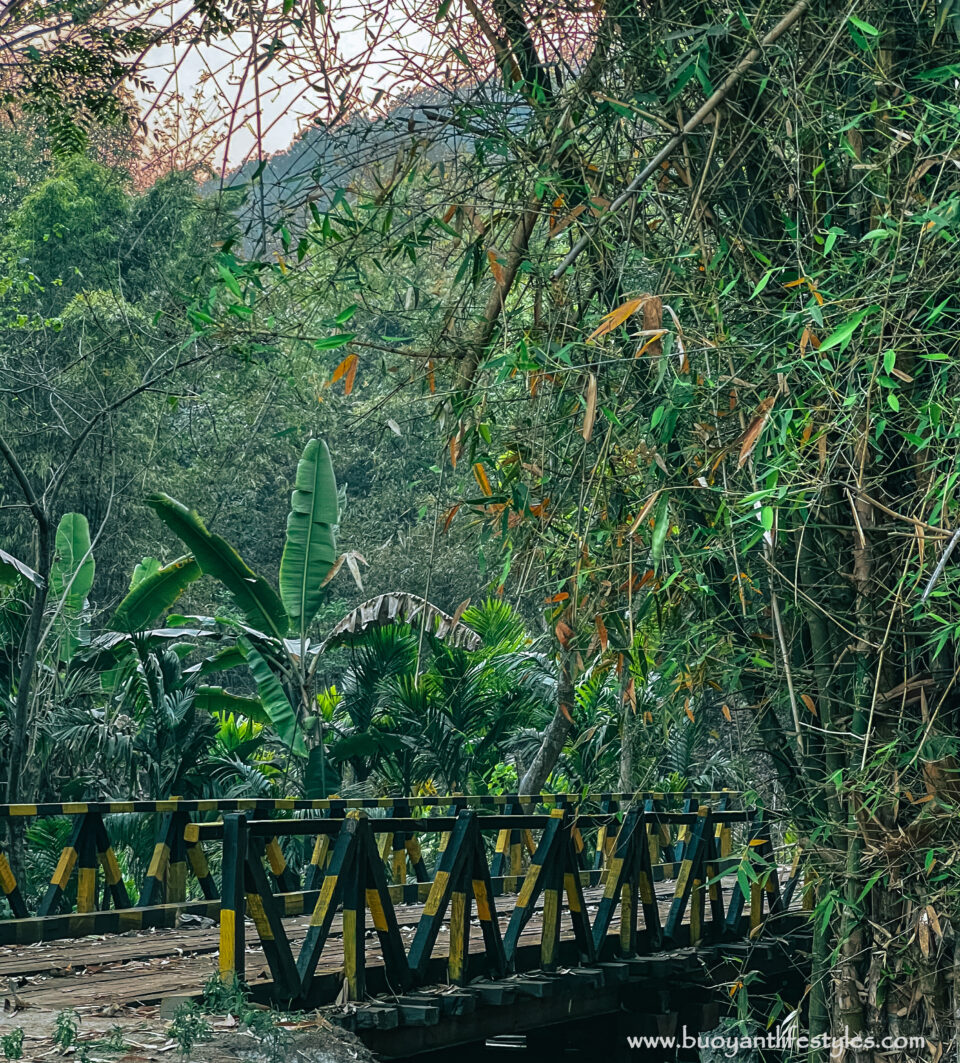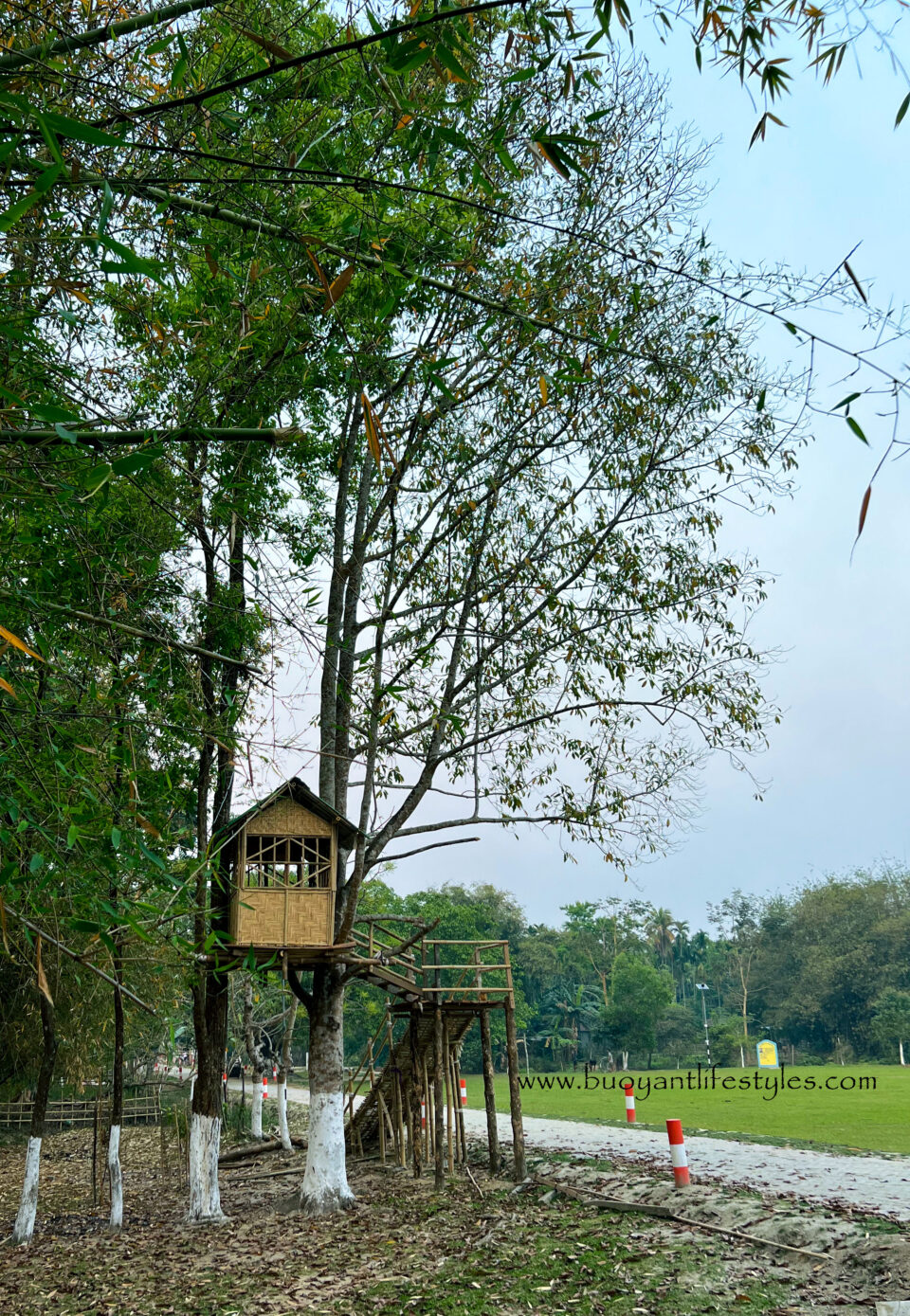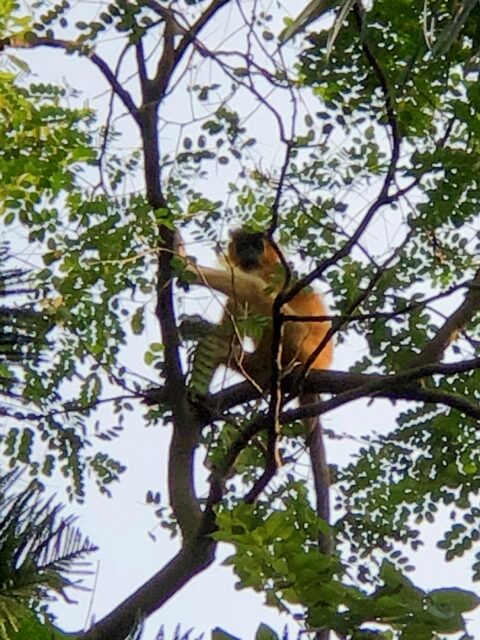Assam is indeed a remarkable state when it comes to lush green forests with a wide variety of flora and fauna. Along with that Assam is deemed a home for several endangered species and the Golden Langur is one of them. The Kakoijana Reserve forest situated in the Bongaigaon district of Assam serves as a safe shelter for 600 such langurs along with other rare birds and animals.

How to reach Kakoijana Reserve Forest
The forest can be easily reached by both public transport and personal vehicle. The nearest town is Bongaigaon which is well connected by all major trains and has a good bus network. The nearest airport is in Guwahati.
You need to reach Rabhapara which is also the name of the village area where the reserve forest is situated. It is connected to the newly under construction six-lane highway connecting Bongaigaon. The place is also a very popular picnic spot and you may find it crowded sometimes during the winter season.

Along with the endangered Golden Langur Kakoijana, which is spread over an area of 17.24 sq km also has a wide variety of rare birds and butterflies. Other endangered species like Binuturong, Indian Pangolin and birds that can be spotted are the barking deer, jungle cat, leopard, flying squirrel, civets, hornbill, lesser adjutant stork and a lot more.
But I am not sure about their frequent visibility due to the thickness of the forest area. However, the forest has gained a special significance as the wildlife habitat of the Golden Langur.
About the Golden Langurs
The species of Golden Langur characterised by the golden orange colour is found in the semi-evergreen and mixed deciduous forests along with India and Bhutan border and is listed in the “World’s 25 most endangered primates”.
In Assam along with Kakoijana Reserve Forests Manas National Park is also a very popular place for spotting Golden Langurs. These langurs change colours according to seasons as well as geography and live on the upper canopy of forests on trees. In bright sunlight, their coat sparkles golden in colour. They are also known as Leaf Monkeys.
Also, read
Koya Kujiya in Abhayapuri in Assam- Things to Do and See
Saralpara in Kokrajhar, Assam a Popular Picnic Spot
Community Conservation in Kakoijana
What is Community Based Conservation? It means when the local communities participate in making an effort to conserve and protect biodiversity in the best possible way. The way to the reserve forest is through the village and thus how the concept of community conservation came into being.
The people residing in the village have taken all the measures to conserve and protect the rich wildlife with the creation of the reserve forest.
In total there are 34 villages adjacent to the reserve forest which is home to around 2000 households. The people residing in the villages mostly belong to the Koch Rajbongshi, Boro, Garo, Rabha and Gorkha communities.
The villagers have been looking after the forest for over 25 years. They have contributed their best efforts to revive and protect the reserve forest resulting in restoring the forest canopy to more than 70% and also increasing the golden langur population which stands at 600 or more almost over three decades.

As told by a local villager when there is a scarcity of food sometimes the langurs enter the village households and the residents look after them at such times.
In contemporary times community conservation by the local communities has shown great results in improving the lives of the local people along with preserving the ecosystem. This concept of Community conservation has received many accolades in various states of Northeast India like Assam, Arunachal, Nagaland.
Along with the golden langurs, the forest is mostly covered with mixed wood subtropical moist deciduous trees like teak, bamboo plantations, etc.

My visit to Kakoijana Reserve Forest
It was quite an impromptu trip to the forest on the Holi weekend. We drove in our car via Abhayapuri. It took around half an hour to reach the place which is well marked on way. The way to the forest is through the village so utmost precaution must be maintained when you are there as the place is also their home. There is a ticket counter at the entrance but since it was Holi and there were so other visitors so we were allowed to enter for free. Personal vehicles are not allowed inside the forest.

There is a big field inside where you can see local boys and girls playing football and other games. The forest is very quiet and if paid attention properly you can also hear the sound of leaves swaying in wind. The tall deciduous trees make a beautiful canopy with the fallen dried leaves under your feet giving total forest vibes.
There are wooden bridges connecting one part of the village to the forest area. You can enjoy a proper trek as most part of the forest area is located on a hilltop.
But the sad part was that we couldn’t spot a single golden langur. When we visited it was almost getting dark maybe most of them got scattered somewhere since the forest covered a huge area.

Wear comfortable shoes and proper clothes as the area may be a little conservative due to the presence of the local villagers. There is also a temple inside and a waterfall mostly in full bloom during the monsoons. We didn’t go to the waterfall as I was not wearing proper shoes and a small distance needs to be covered on foot.

Some tips to keep in mind.
- Once in the forest area try to maintain silence as loud voices may scare away the langurs.
- Do not try to tease the animals remember it’s their home
- Also, take prior permission from the village people before clicking their pictures
- Make sure you don’t litter the space with plastic bottles and packets
- Carry your own drinking water and wear comfortable shoes and clothes
- You can carry your own food and go for a picnic during the winter season.

Thanks for reading the post, feel free to share and post a comment and also let me know if you have visited Kakoijana Reserve Forest in Assam.
PIN FOR LATER








4 Comments
Thanks for sharing your experience, I didn’t k ke about this at all. The place looks so beautiful. I wish you spotted some Golden Langoors too!
Yes, that was a big disappointment. Hoping to spot it next time. Thanks a lot for reading the post!!
Is it open during monsoon period?
Yes, it is. You can visit anytime in Winters it looks most beautiful.